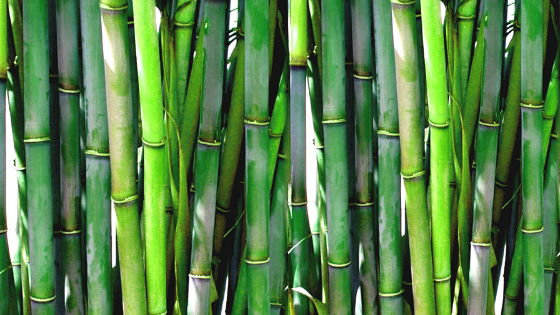Animal-sourced yarns are widely available in the fiber arts world, but what about plant-based yarns? Is it even possible to spin yarn from plants if they don’t have hair or fur? Absolutely!
Plant-based yarns don’t have the typical qualities of other yarns, but understanding the characteristics of each can help you choose the perfect use for each one!
See also: Animal-Sourced Yarns
Bamboo
Bamboo yarn, sometimes also called bamboo silk, produces a beautiful plant-based yarn with the luster and drape of silk. It is similar to mercerized cotton, soft and strong. For a yarn, it is very heavy; be sure to factor the weight and stretch in when knitting or crocheting garments and afghans with bamboo yarn.
Bamboo fiber makes a very slippery yarn; I recommend working with bamboo needles, which tend to have more grip than aluminum.
Banana Silk
Anything named silk must be luminous, right? Banana silk is no different. This yarn, spun from the peels of the banana fruit, has sheen for days! It’s lightweight, absorbs moisture, and is readily available in many colors.
Coir
You may recognize coir from its widespread use as doormats, but do you know its origin? It’s made from the fibers of the coconut plant! Like many vegetable fibers, coir can be rough, but is very durable. It’s most often available undyed/natural color.
Cotton
Cotton yarn is an easy find in local yarn shops, craft stores, and big-box stores. This yarn is ideal for home items that need to be durable and absorbent, such as kitchen towels. It is strong and retains its shape fairly well, though it is prone to stretching when wet.
Hemp
Hemp fibers are derived from the stems of the hemp plant. The yarn spun from them is strong; it does not shrink or pill and is considered the most durable of all natural textile fibers. Like bamboo, hemp is a hardy and renewable resource.
Linen
Linen is derived from the flax plant, the one that gives both flaxseed oil and the term towhead. The fiber is strong and inelastic, with a good amount of sheen. It easily wrinkles, which is very noticeable in lighter colors. It takes dye beautifully and is available in many colors.
Jute
Another bast fiber, jute is derived from flowering plants in the mallow family. This off-white fiber dyes beautifully and is available in a variety of colors. It is strong, coarse, and shiny and is most widely recognizable when it is woven into burlap (also known as hessian).
Nettle
Nettle fibers, derived from the common nettle plant, are fine, long, and hollow, making the yarn spun from them both breathable and warm. It is similar to linen, but stronger and softer.
Nettle is also known as Alloo.

